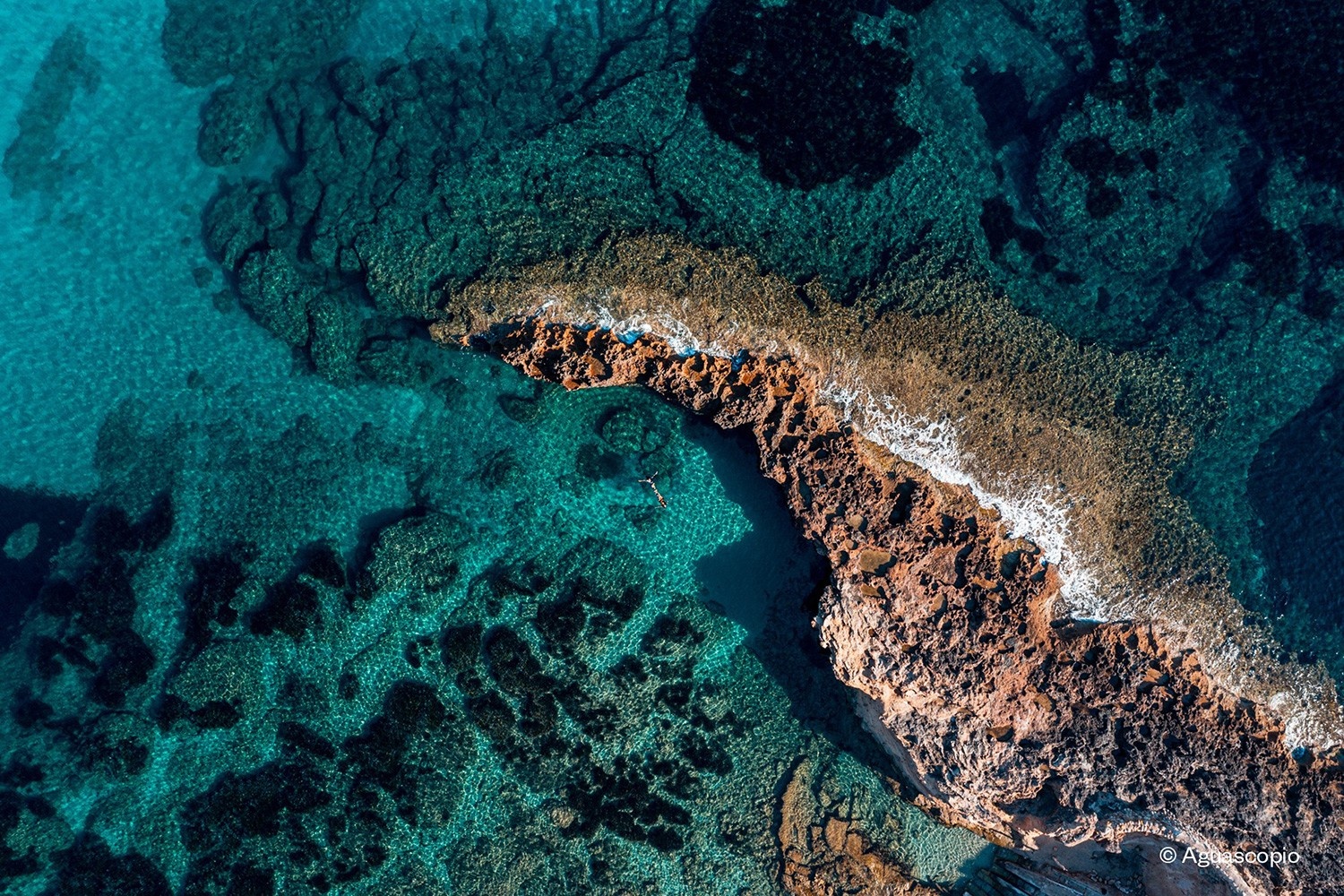“Protecting Posidonia oceanica is not just about protecting the sea. It is about our future.”
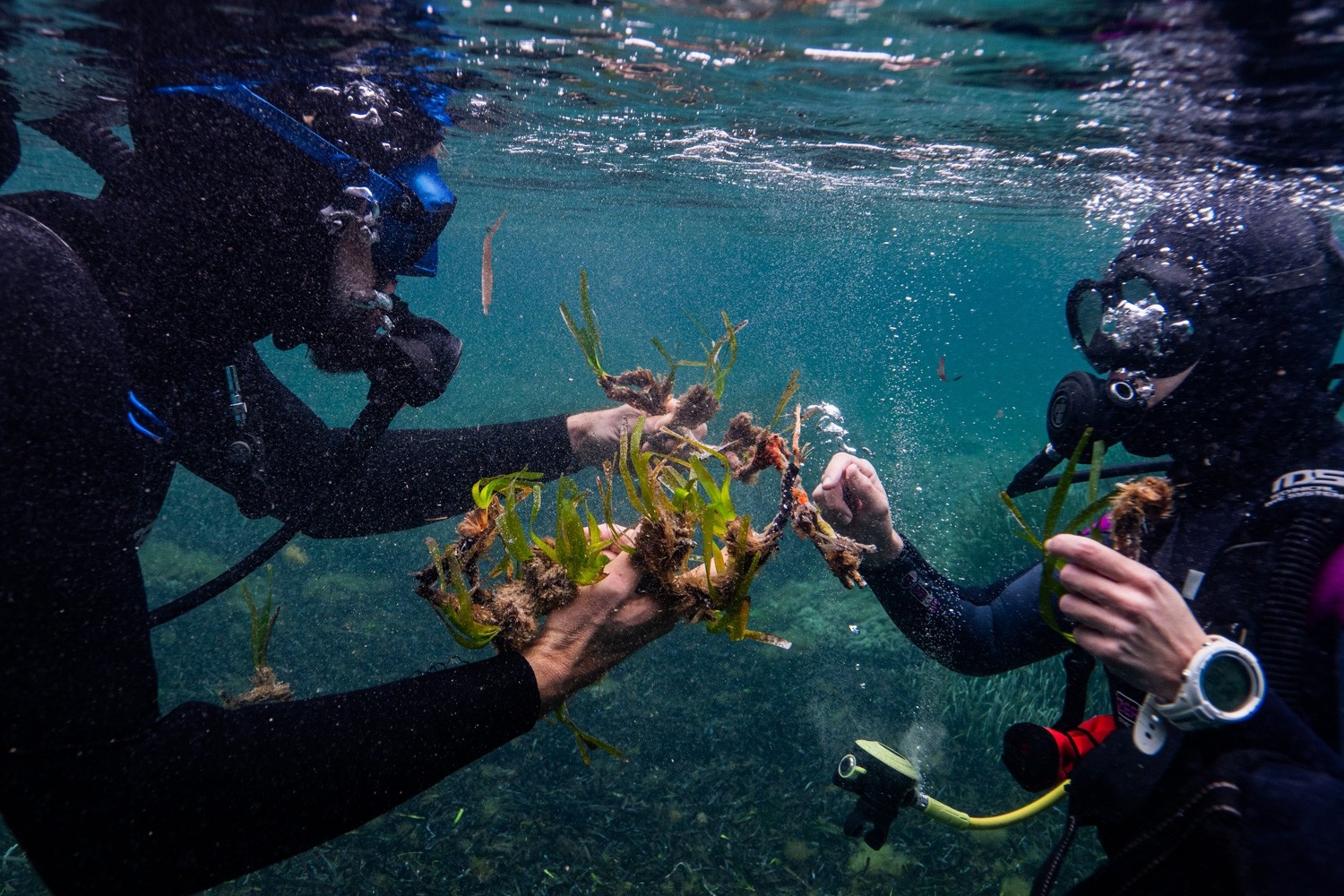
Analyzing seagrass during restoration work. Courtesy of Silvia Mus.
It’s late afternoon in Cala Sant Vicenç, just north of Port de Pollença on Mallorca, and the sea is impossibly clear. From my rocky perch, the water stretches out in jewel-toned bands — emerald near shore, sapphire farther out, streaked with aquamarine where light cuts between submerged stones. A breeze carries pine and salt, while cicadas buzz in the brush behind me. Everything feels suspended.
Here — and along coastlines across the Balearic Islands — the natural beauty appears near perfect. On Mallorca, where decades of mass tourism have reshaped the shore with resorts, package holidays, and cruise ports, such clarity and quiet can seem like a mirage. But this isn’t just luck of the landscape. Beneath the surface lies Posidonia oceanica, an ancient Mediterranean seagrass that gives the water its glistening hues and the beaches their soft, silky sand.
The seagrass forms vast meadows that help protect marine ecosystems. They oxygenate and purify the sea, prevent coastal erosion, and sequester carbon dioxide. These tangled, sunlit habitats also shelter native marine life.
And yet, for all its labor, this aquatic flora faces peril. Over the last 50 years, P. oceanica beds have been lost or severely degraded due to climate change, illegal boat anchoring, pollution, coastal development, and invasive species. Not unlike the plight of kelp forests, once damaged, the seagrass takes decades — if not centuries — to recover due to its slow growth rate.
Still, Posidonia remains one of the Mediterranean’s greatest guardians. Without it, the water turns cloudy, biodiversity collapses, and beaches begin to disappear. Fortunately, foundations and government incentives on all four major islands are tackling the issue head-on.
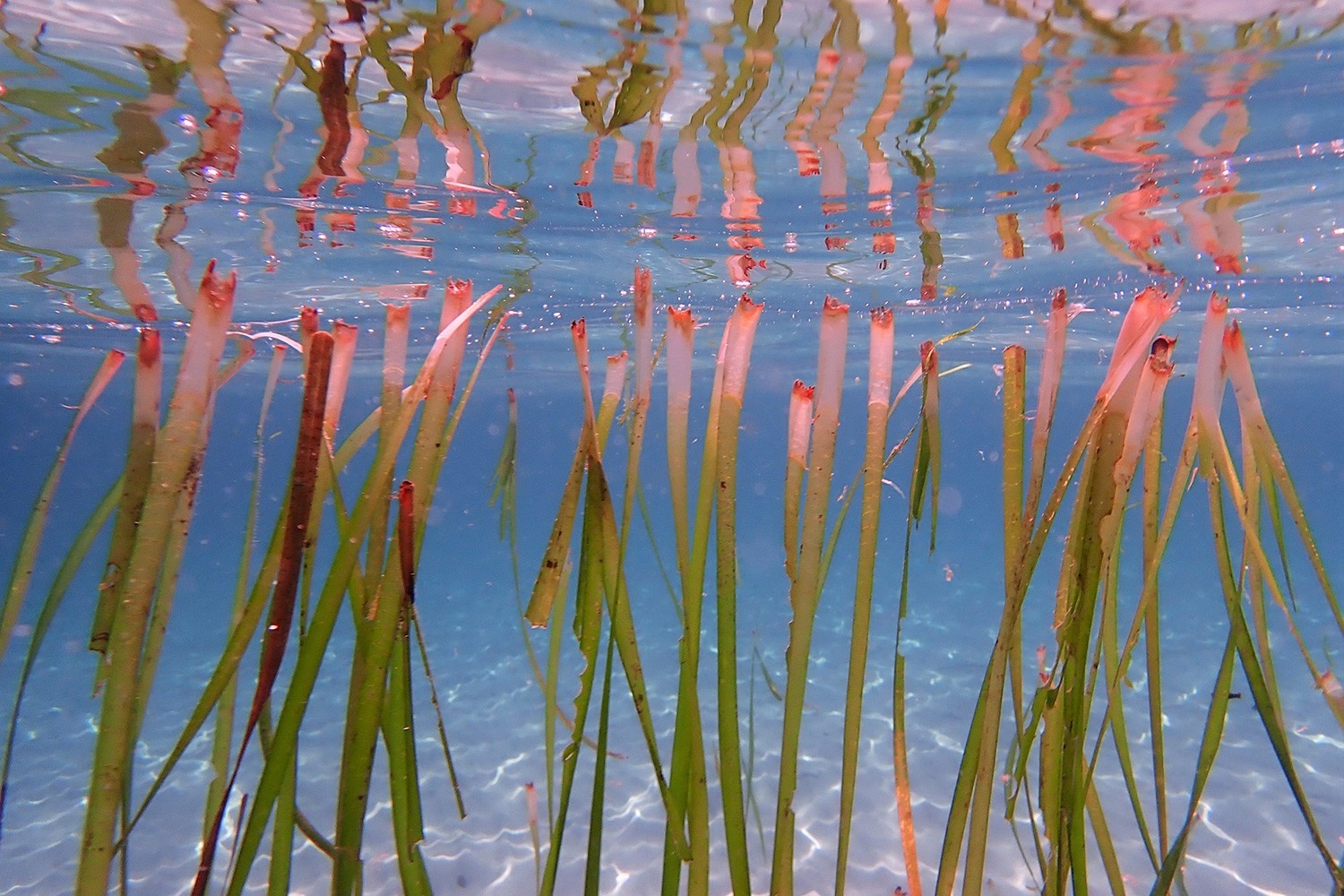
Getting up close with Posidonia Oceanica. Courtesy of Marta Carreras Rivera. Photo loaned by the MARE BALEAR competition for conservation purposes.
Mallorca: A Testing Ground for Seagrass Solutions
As the largest island in the archipelago, Mallorca has become a focal point for marine conservation. Raquel Vaquer, Balearic Sea State Report Coordinator at the Marilles Foundation, stresses the urgency of protecting the seagrass.
“These meadows are very sensitive to global warming, which produces reactions like physiological stress, changes in ecosystem biodiversity, and increased plant mortality,” she said. “As a result, seagrass ecosystem services could disappear by 2040–2060 in the shallowest areas.”
Damage to the seagrass meadows began in the 1960s due to population growth and tourism, and those pressures have only intensified. Marilles raises awareness through education campaigns, media outreach, and by funding scientific studies.
In a study near Illetes, researchers found P. oceanica meadows more than 2,300 years old. According to Vaquer, each hectare stores around 1,600 tonnes of carbon dioxide — roughly what 1,000 cars emit in a year.
That makes these ancient plants one of the Mediterranean’s most powerful natural tools for fighting climate change. Damage or destruction to the meadows risks the release of stored carbon back into the atmosphere.
To protect what remains, Mallorca is turning to more coordinated, large-scale efforts.
Mallorca Preservation, an organization working to protect the island by funding and supporting local projects focused on sustainable and impactful solutions, offers a multi-faceted approach to preservation. “We combine real-time sea surveillance with scientific mapping and institutional collaboration,” said Marcial Bardolet Richter, a marine geographer and the organization’s president.
Richter also coordinates the Balearic government’s Posidonia Surveillance Service, which manages a fleet of 18 patrol boats that inform and guide boaters to avoid seagrass meadows. In 2025, the initiative introduced new technology to help patrol more efficiently, predict potential damage, and respond before problems escalate.
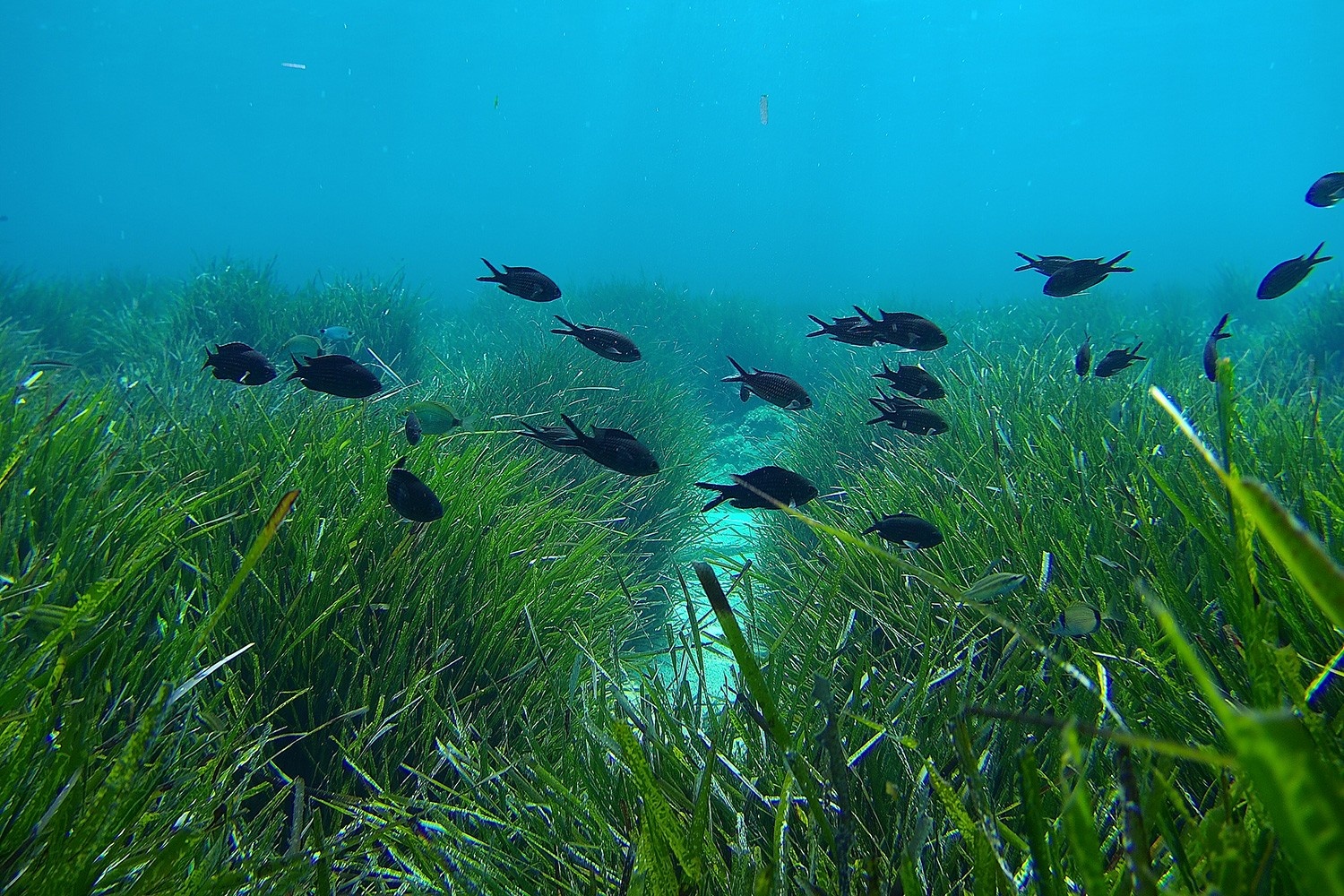
Posidonia provides a home for indigenous marine life. Courtesy of IBANAT.
Menorca: A Biosphere in a Delicate Balance
Menorca, a UNESCO Biosphere Reserve since 1993, has long aimed to balance conservation and development. But that balance is under pressure.
“While 61 percent of waters within the reserve are technically protected, only 1.7 percent are actively managed,” said Rebecca Morris, executive director at Menorca Preservation. “That’s why we’ve aligned with the UN’s goal to protect 30 percent of marine areas by 2030.”
Eva Marsinyach, a research technician at OBSAM-IME who has studied P. oceanica since 2008, said the biggest challenge in preserving the seagrass is the cost and complexity of conducting long-term research at sea. Because the meadows span vast areas, monitoring requires simple, scalable methods that can be replicated consistently over time and across locations.
Still, Menorca is making progress. The island now has 15 monitoring stations — the largest network in the Balearics. And in 2019, the creation of the Isla del Aire Marine Reserve added more than 7,000 hectares of protected waters, home to an estimated 634 species.
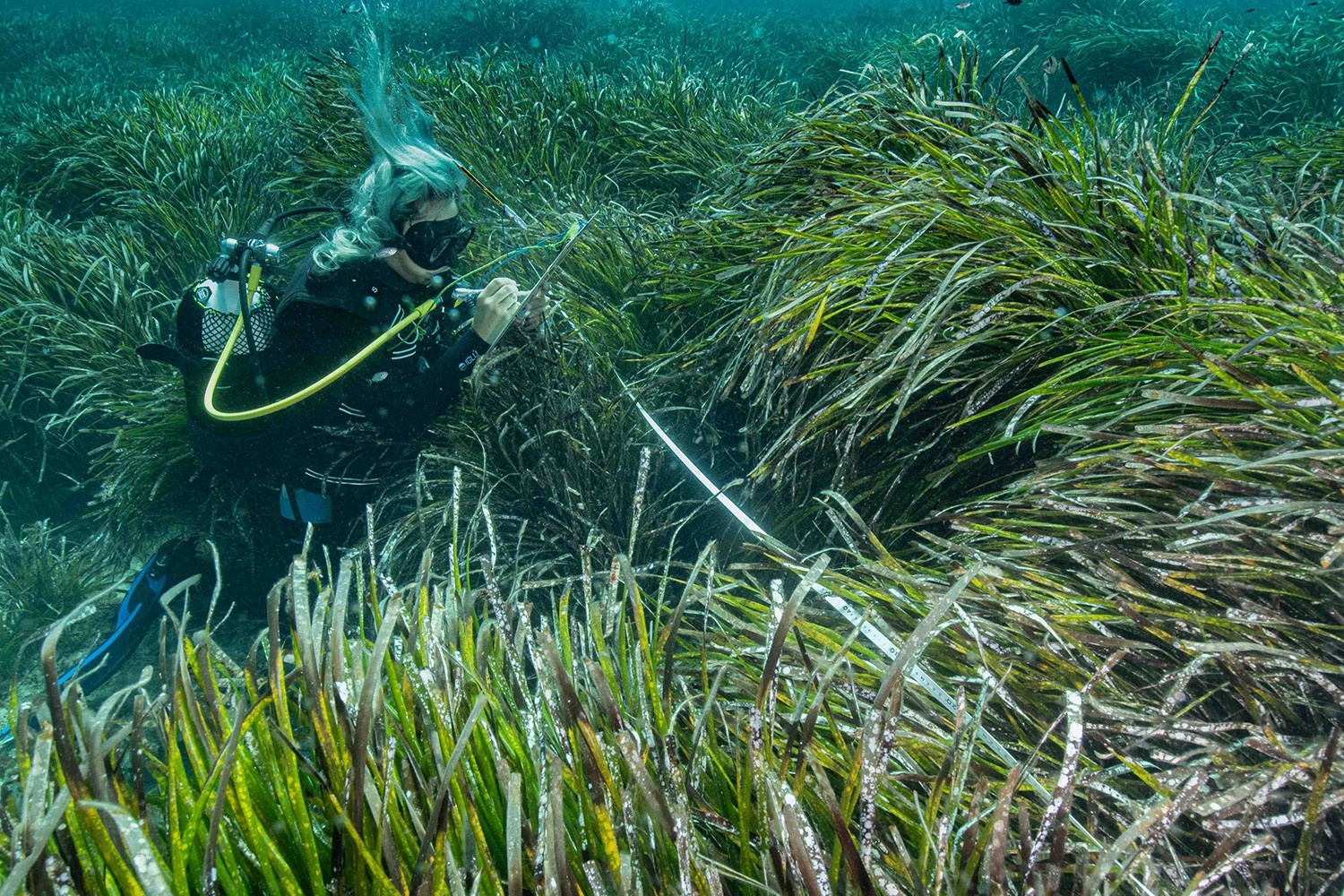
Researchers studying seagrass in Talamanca Bay, Ibiza. Courtesy of Soledad Torres Gen-Gob.
Ibiza and Formentera: Different Approaches to Protection
The seagrass meadow in Ses Salines Natural Park — shared by Ibiza and Formentera — is UNESCO-certified and estimated to be around 200,000 years old. Stretching more than nine miles, it’s one of the Mediterranean’s oldest and largest underwater ecosystems.
But while the meadow connects the islands, their conservation strategies differ.
In Ibiza, the pressures of mass tourism complicate protection efforts. IbizaPreservation, founded in 2008 in response to mounting seagrass damage, focuses on long-term monitoring, education, and research.
“The objective is to monitor seagrass conditions over time, regardless of improvements,” said IbizaPreservation’s Executive Director Inma Saranova. “These ecosystems face constant pressure — from poor anchoring practices to climate change.”
On the ground, GEN-GOB Eivissa surveys Posidonia health in Cala Vadella and Talamanca Bay — two coves designated as natural anchorages and flagged for protection due to their ecological importance.
“These areas have meadows mapped within the Posidonia decree,” said marine coordinator Xisco Sobrado, referring to a 2018 regulation that prohibits anchoring on seagrass beds across the Balearics. “This monitoring methodology is proving successful in documenting impacts and setbacks.”
While Ibiza leans on observation and research, Formentera has taken a more proactive and community-driven approach to protection.
With just over 11,000 residents, the island has become a global model for community-led marine conservation. The Save Posidonia Project, launched in 2017, allows individuals and companies to symbolically adopt patches of seagrass, with funds going toward monitoring and research. The island also enforces some of the toughest marine regulations in the Balearics, including seasonal anchoring bans and limited boat traffic during peak months.
A Fragile Future Underwater
Seagrass protection has moved slowly — but across the Balearic Islands, momentum is building.
From Ibiza to Mallorca, local groups are raising awareness and pushing for change. IbizaPreservation’s Posidonia Protection Project has been signed by hundreds of tour operators and businesses, committing to avoid harmful practices and educate visitors.
At Mallorca Preservation, that work is personal. “We seek to reconnect people with the sea and push a shared sense of responsibility for its conservation,” said Richter. “Protecting Posidonia oceanica is not just about protecting the sea. It is about our future.”
Indeed, the clock is ticking. Without action, these ancient underwater meadows — the hidden force behind the Balearics’ soft beaches and clear waters — could vanish within decades. And what disappears beneath the surface will change what’s left above it.

Jessica Benavides Canepa is a Spain-based lifestyle journalist focused on travel, food, wellness, and sustainability. Digital and print bylines appear in AFAR, Condé Nast Traveler, Robb Report, Travel + Leisure, TIME, National Geographic Traveler, and more. She has traveled to 60+ countries, and when not out exploring the world, enjoys writing profiles, curated lists, and deep dives into the origins of places, faces, and trends. Follow her adventures on Instagram @jbcanepa or through her portfolio site.
North Stars: Climate Actions, Community Support, Wildlife Ecosystems


